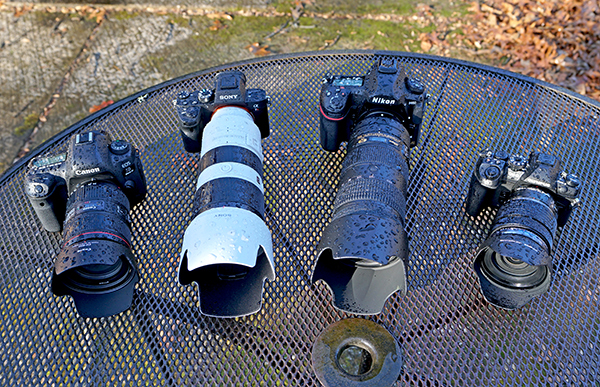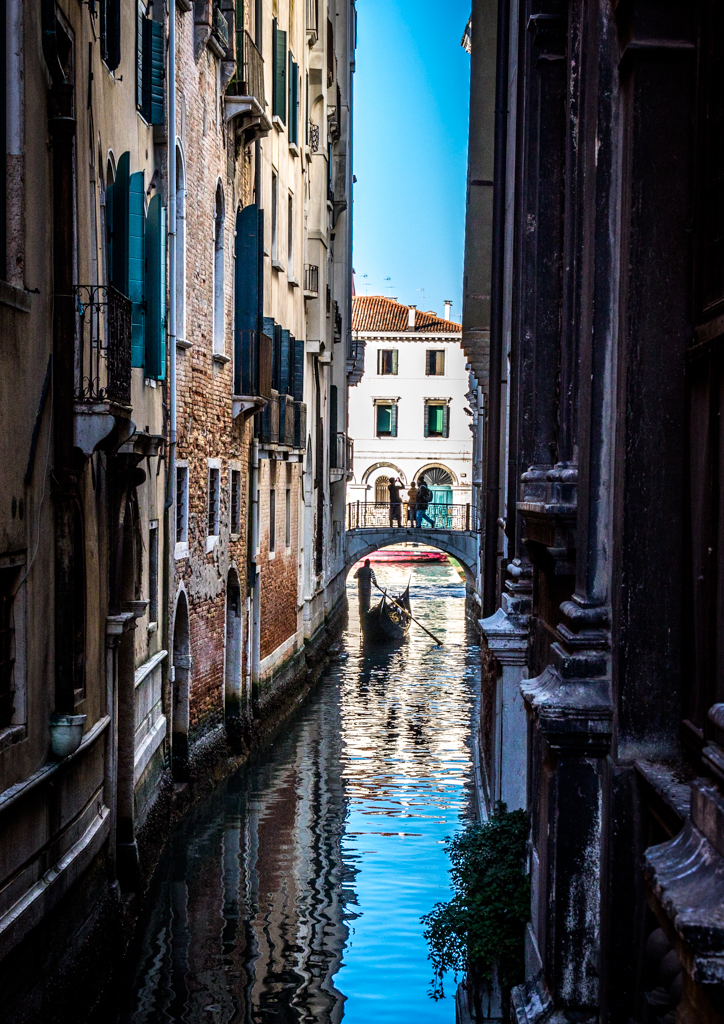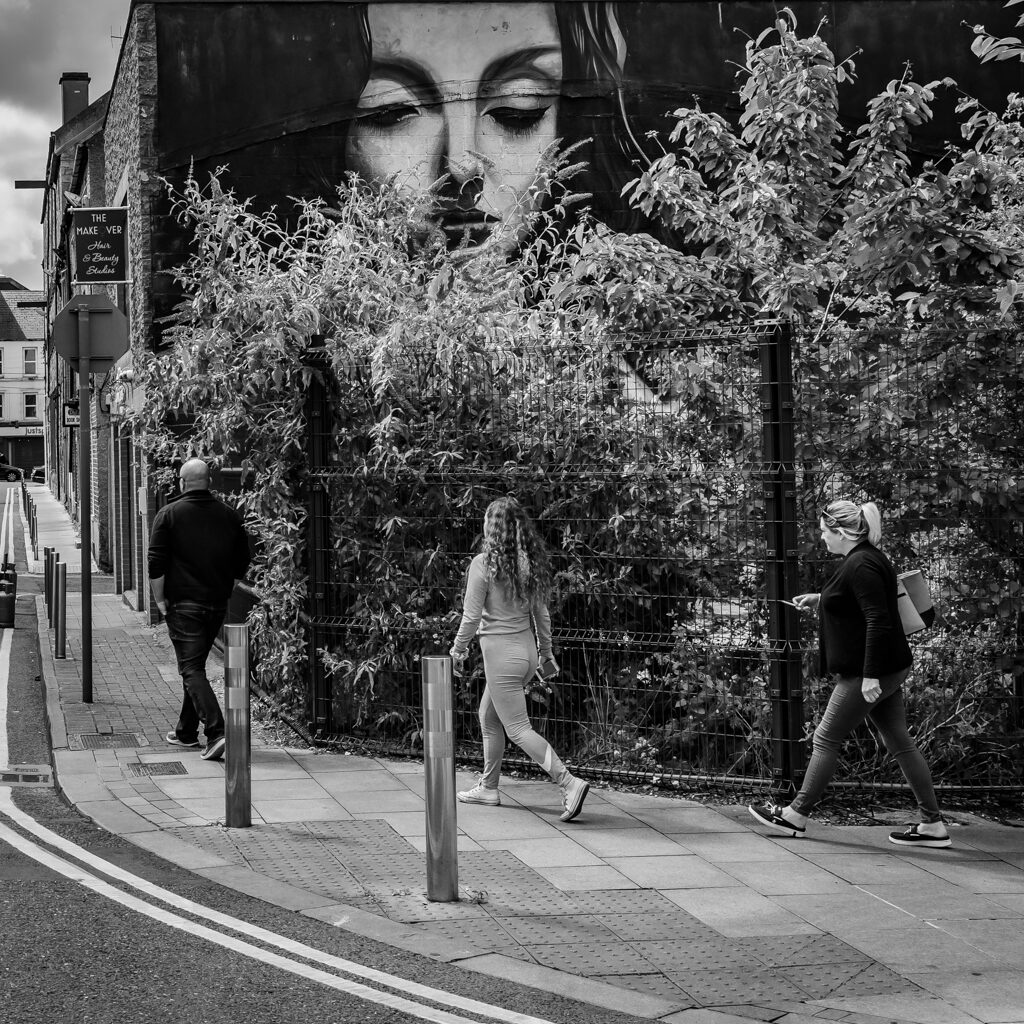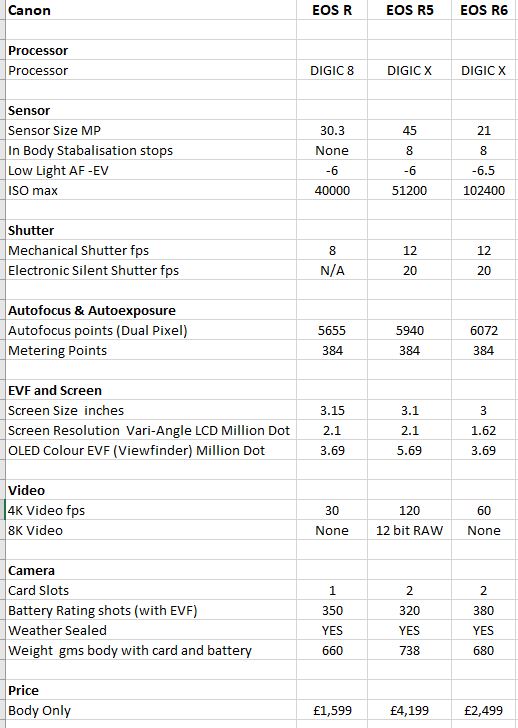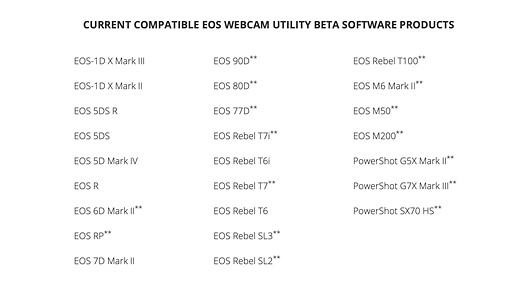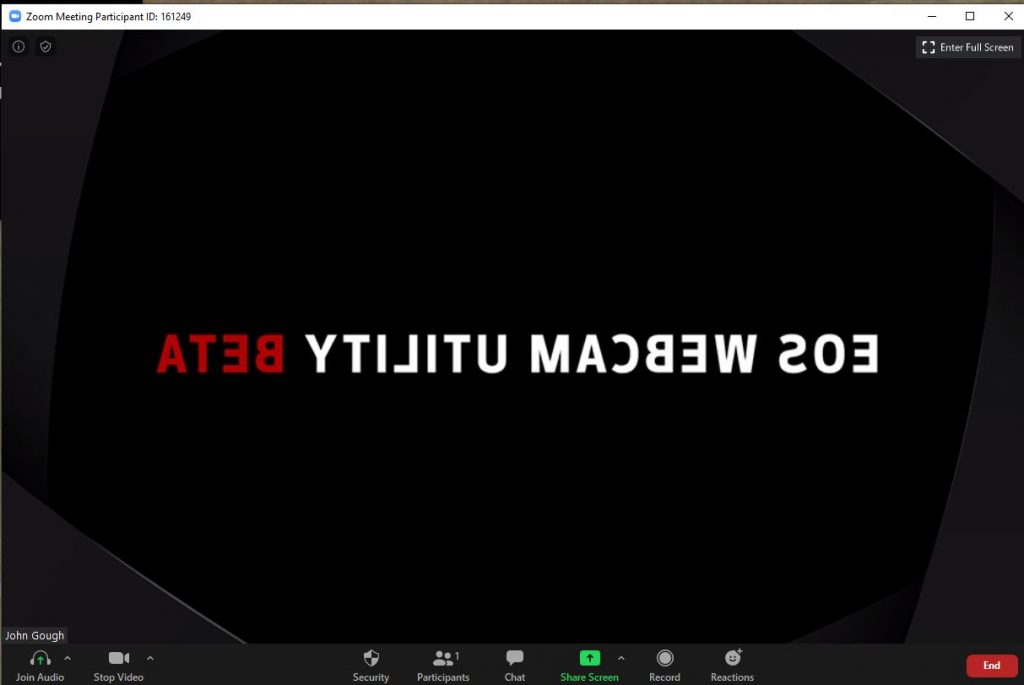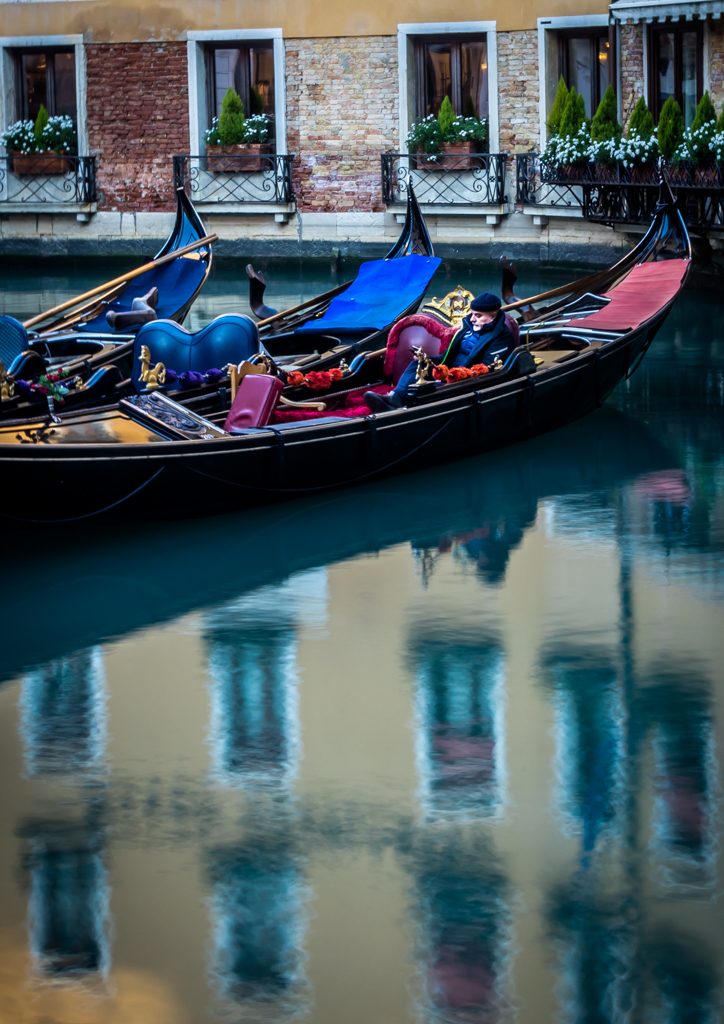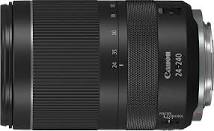
Finally this week after considerable prelaunch publicity the Canon R3 was announced in a burst of Canon September News. We had got most of the details right, except we did not know the price which will be £5879 in the UK, putting this camera clearly in a professional space.
Canon R3 Specification
A recap on the specification.
- 24MP Stacked CMOS Dual Pixel AF sensor
- 30 fps Electronic shutter
- Eye Control AF and a 5.69M-dot electronic viewfinder
- AF with subject recognition for humans animals and vehicles.
- Low light capability: AF rated as working down to -7.5EV (with F1.2 lens)
- Both CFexpress Type B and UHS-II SD slots
- Ethernet, Wi-Fi and Bluetooth
- Canon’s new Multi-Function Shoe to which new accessories e.g. flash and mics can be fitted.
- A one piece magnesium alloy body design, integrated with a grip section
- Weather and dust resistance which is the same as EOS-1D.
Will the 24MP sensor be enough? This is what we wait to see.
Canon R3 Eye Control
This is a feature that cannot be demonstrated because you have to see it with your own eyes! In the video below from the irrepressible Chris Nichols and Jordon from DPReview, do their best, but we cant wait until these guys get their hands on a production model to see how it really performs. However, it feels like we are at the start of a new big change in camera design, and the old joysticks etc for moving the focus point around a screen, will seem so twin lens reflex in just a few years time.
That is if eye control works of course. If it does for wildlife shooters, this is a gamechanger.
Other Canon September News
It looks as though Canon is looking at both ends of the market, with the launch of the RF16mm f2.8 lens for just £319.
Excellent for vloggers, but also amazing for stills photographers with so many creative possibilities. As a documentary and street photographer, I cant wait to get my hands on it.
I use the RF35mm every day.
This video from Gordon Laing gives a preview
There is also a new 100-400 RF zoom at f5.6-f8 at £699. It seems a bit slow but considering the stabilisation on the latest R5, R6 and R3 then you have to ask why we need big glass. On the other hand, this lens may be a compromise too far. Let’s wait for the reviews.
Below Gordon does another excellent preview of this lens.
Canon’s Remarkable Prediction
Thinking about both ends of the market, there was an interesting snippet on Canon Rumours. Which was that Canon will announce a new R camera in January that is “going to annoy a lot of the [Canon] fanboys”.
What could this mean? A Canon R MkII, or a new Canon RP. My thinking is the latter as Canon may want to take on Olympus and Fuji with a smaller but fully functioning full frame or APSC mirrorless camera. This could replace the M-Series and bring their mirrorless cameras together in the R Series.
Remember you heard it here first!

